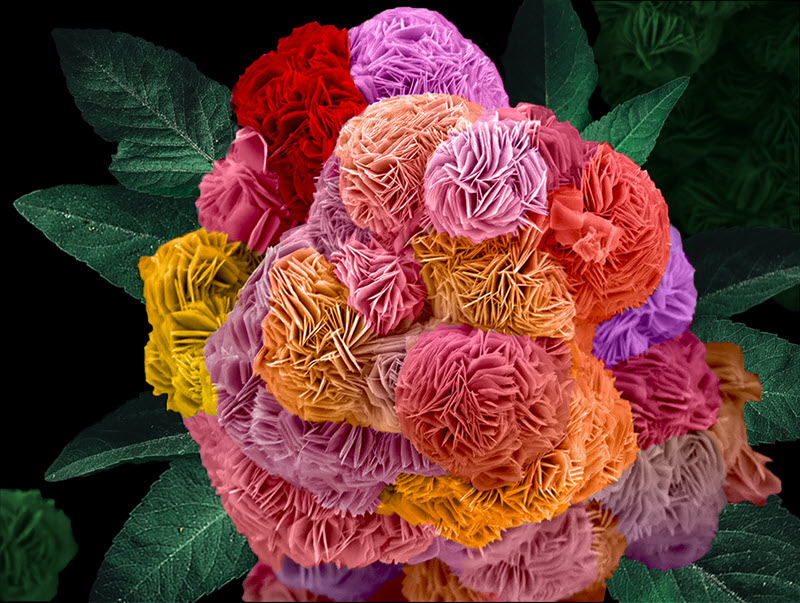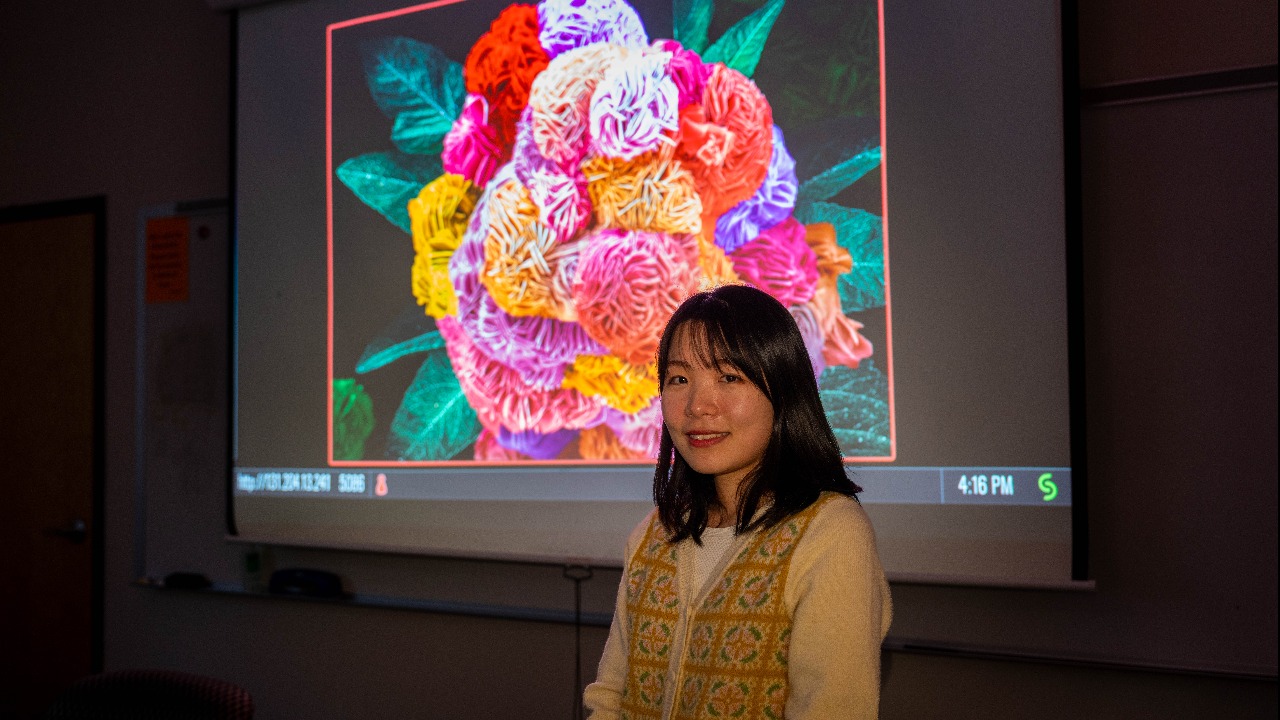Materials engineering doctoral student extends department’s NanoArt dynasty with MXenes
Published: Feb 15, 2024 4:00 PM
By Jeremy Henderson
There exists in the scientific community a small but growing contingent of materials engineers who regularly render their research into works of art.
And it's official — Yeonjin Baek is one of the best.
The materials engineering doctoral student recently took home the grand prize in Japanese research technology company JEOL's annual scanning electron microscope (SEM) image contest for a submission that, with a little help from Photoshop, turned a scan of a few sheets of atoms 10 times smaller than the width of a human hair into what could easily be mistaken as a floral masterpiece by Edouard Manet.
"I initially captured it without the intention of entering an art contest," Baek said. "But I noticed that the shape resembled a flower bouquet."

"Flower Power" is technically a scan of a vanadium oxide nano structure synthesized from two-dimensional vanadium carbide MXenes. Thanks to the dramatic texture of what some refer to as their "accordion-like morphology," MXenes — a still relatively new class of 2D conductive crystalline nanomaterials — have in recent years become a go-to medium in so-called NanoArt. And Auburn materials engineering students have done more with it than most.
Working on the same $500,000 JEOL JSM-7000F SEM Baek used, materials engineering doctoral student Armin VahidMohammadi won the grand prize in the same competition in 2017 with his "Nano Nemo on the Water," a scan of a MXene designated Ti2C modified to resemble a clown fish. VahidMohammadi eventually established something close to a dynasty in NanoArt competitions for similar scans that played on pop culture.
Of course, MXenes have their more practical applications — many show promise as electrode material for supercapacitors and batteries — and Auburn Engineering's MXene expertise definitely extends beyond the artistic. VahidMohammadi's advisor, Majid Beidaghi, former associate professor of mechanical engineering, was actually on the Drexel University research team that discovered MXenes in 2011.
"I work on Dr. Bart Prorok's research team and some of the work in our lab involves using MXenes as cathode materials for energy storage," Baek said. "We have focused on both pure MXenes and hybrid MXene structures for electrodes. We tried to synthesize the vanadium oxide structure from 2D MXene structures, resulting in a more effective hybrid nanostructure. What you're seeing in the work represented in my competition submission is vanadium carbide(V2C) MXenes absorbing the hydrothermal energy to bloom the Vanadium oxide nano petals.
"Considering the multitude of impressive images submitted last year, I hadn't anticipated mine being chosen as the best," she said. "However, right after the new year, JEOL contacted me to tell me the news. It brought me immense joy. This was my first time submitting an image."

Yeonjin Baek poses in front of a display of "Flower Power," which won the grand prize in JEOL'S 2023 SEM Image Contest.

